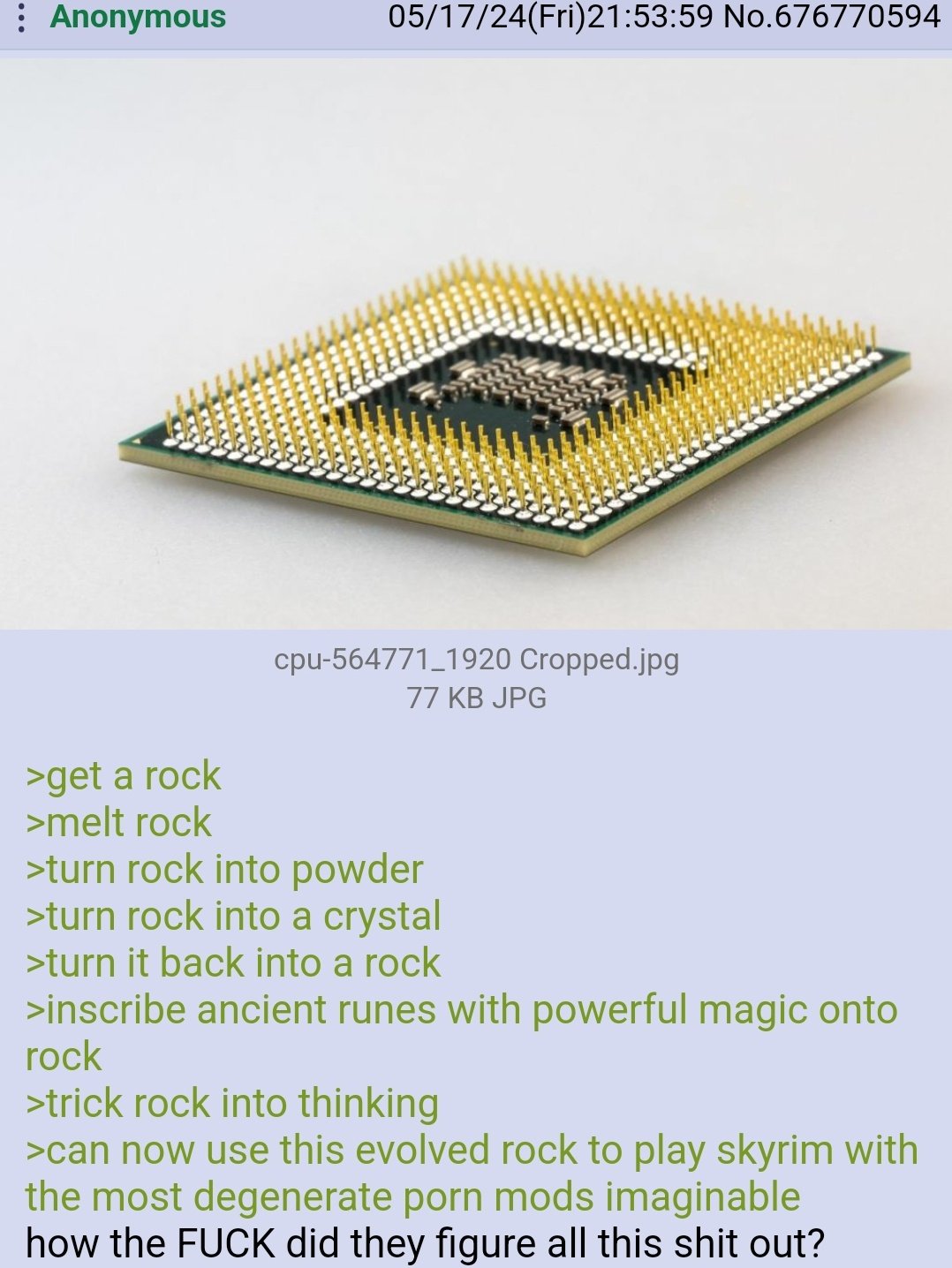this post was submitted on 07 Jun 2024
752 points (97.2% liked)
Greentext
6340 readers
1210 users here now
This is a place to share greentexts and witness the confounding life of Anon. If you're new to the Greentext community, think of it as a sort of zoo with Anon as the main attraction.
Be warned:
- Anon is often crazy.
- Anon is often depressed.
- Anon frequently shares thoughts that are immature, offensive, or incomprehensible.
If you find yourself getting angry (or god forbid, agreeing) with something Anon has said, you might be doing it wrong.
founded 2 years ago
MODERATORS
you are viewing a single comment's thread
view the rest of the comments
view the rest of the comments

One Switch can have two states. Switch on is a 1 and switch off is a 0. Group 8 switches together and you get a byte. Miniaturize the switches and put 8 trillion of them into the size of a fingernail, and ta-da you have a 1TB micro SD card.
Wire up two switches so that a light bulb only will go on when both switches are on (1). This wiring creates an AND gate. Adjusting the wiring so that if either of the switches are on, the light turns on. This wiring is an OR gate.
Channing the output of the lightbulb and treating it like a new switch allows you to combine enough AND and OR gates to make other logic blocks, NOT, NAND, XOR, etc.
Combine enough logic blocks and you can wire up a circuit so that you can add the value of two switches together, and now you can start to perform addition.
This all naturally evolves to the point where you can play Skyrim with the most degenerate porn mods.
I like your explanation, but i dont understand it. Keep up the good work.
This game may help, but I didn't play it myself (yet)
In addition to Turing Complete, which is really good, Code: The Hidden Language of Computer Hardware and Software is a fantastic book that literally goes from two kids trying to talk to each other at night with flashlights, to a fully working Z80 clone, while not being hard to understand and using a really good conversational teaching method. It's how I figured out a lot about CPU design, microarchitectures, assembly and machine langauge and a lot of other things.